Text version
�
FUNDAMENTALS OF
Database
Systems
SEVENTH EDITION
�
This page intentionally left blank
�
FUNDAMENTALS OF
Database
Systems
SEVENTH EDITION
Ramez Elmasri
Department of Computer Science and Engineering
The University of Texas at Arlington
Shamkant B. Navathe
College of Computing
Georgia Institute of Technology
Boston Columbus Indianapolis New York San Francisco Hoboken
Amsterdam Cape Town Dubai London Madrid Milan Munich Paris Montreal Toronto
Delhi Mexico City São Paulo Sydney Hong Kong Seoul Singapore Taipei Tokyo
�
iEnergizer Aptara®, Ltd.
Operations Specialist: Maura Zaldivar-Garcia
Cover Designer: Black Horse Designs
Manager, Rights and Permissions: Rachel Youdelman
Associate Project Manager, Rights and Permissions:
Timothy Nicholls
Full-Service Project Management: Rashmi Tickyani,
Composition: iEnergizer Aptara®, Ltd.
Printer/Binder: Edwards Brothers Malloy
Cover Printer: Phoenix Color/Hagerstown
Cover Image: Micha Pawlitzki/Terra/Corbis
Typeface: 10.5/12 Minion Pro
Vice President and Editorial Director, ECS:
Marcia J. Horton
Acquisitions Editor: Matt Goldstein
Editorial Assistant: Kelsey Loanes
Marketing Managers: Bram Van Kempen, Demetrius Hall
Marketing Assistant: Jon Bryant
Senior Managing Editor: Scott Disanno
Production Project Manager: Rose Kernan
Program Manager: Carole Snyder
Global HE Director of Vendor Sourcing
and Procurement: Diane Hynes
Director of Operations: Nick Sklitsis
Copyright © 2016, 2011, 2007 by Ramez Elmasri and Shamkant B. Navathe. All rights reserved. Manufactured
in the United States of America. This publication is protected by Copyright and permissions should be obtained
from the publisher prior to any prohibited reproduction, storage in a retrieval system, or transmission in any
form or by any means, electronic, mechanical, photocopying, recording, or likewise. To obtain permission(s) to
use materials from this work, please submit a written request to Pearson Higher Education, Permissions
Department, 221 River Street, Hoboken, NJ 07030.
Many of the designations by manufacturers and seller to distinguish their products are claimed as trademarks.
Where those designations appear in this book, and the publisher was aware of a trademark claim, the designations
have been printed in initial caps or all caps.
The author and publisher of this book have used their best efforts in preparing this book. These efforts include
the development, research, and testing of theories and programs to determine their effectiveness. The author and
publisher make no warranty of any kind, expressed or implied, with regard to these programs or the
documentation contained in this book. The author and publisher shall not be liable in any event for incidental or
consequential damages with, or arising out of, the furnishing, performance, or use of these programs.
Microsoft and/or its respective suppliers make no representations about the suitability of the information
contained in the documents and related graphics published as part of the services for any purpose. All such
documents and related graphics are provided “as is” without warranty of any kind. Microsoft and/or its respective
suppliers hereby disclaim all warranties and conditions with regard to this information, including all warranties
and conditions of merchantability. Whether express, implied or statutory, fitness for a particular purpose, title
and non-infringement. In no event shall microsoft and/or its respective suppliers be liable for any special,
indirect or consequential damages or any damages whatsoever resulting from loss of use, data or profits, whether
in an action of contract. Negligence or other tortious action, arising out of or in connection with the use or
performance of information available from the services.
The documents and related graphics contained herein could include technical inaccuracies or typographical
errors. Changes are periodically added to the information herein. Microsoft and/or its respective suppliers may
make improvements and/or changes in the product(s) and/or the program(s) described herein at any time.
Partial screen shots may be viewed in full within the software version specified.
Library of Congress Cataloging-in-Publication Data on File
10 9 8 7 6 5 4 3 2 1
ISBN-10: 0-13-397077-9
ISBN-13: 978-0-13-397077-7
�
To Amalia
and
to Ramy, Riyad, Katrina, and Thomas
R. E.
To my wife Aruna for her love, support, and understanding
to Rohan, Maya, and Ayush for bringing so much joy into our lives
and
S.B.N.
�
This page intentionally left blank
�
Preface
This book introduces the fundamental concepts
necessary for designing, using, and implementing
database systems and database applications. Our presentation stresses the funda-
mentals of database modeling and design, the languages and models provided by the
database management systems, and database system implementation techniques.
The book is meant to be used as a textbook for a one- or two-semester course in
database systems at the junior, senior, or graduate level, and as a reference book. Our
goal is to provide an in-depth and up-to-date presentation of the most important
aspects of database systems and applications, and related technologies. We assume
that readers are familiar with elementary programming and data-structuring con-
cepts and that they have had some exposure to the basics of computer organization.
New to This Edition
The following key features have been added in the seventh edition:
■■ A reorganization of the chapter ordering (this was based on a survey of the
instructors who use the textbook); however, the book is still organized so
that the individual instructor can choose to follow the new chapter ordering
or choose a different ordering of chapters (for example, follow the chapter
order from the sixth edition) when presenting the materials.
■■ There are two new chapters on recent advances in database systems and big
data processing; one new chapter (Chapter 24) covers an introduction to the
newer class of database systems known as NOSQL databases, and the other
new chapter (Chapter 25) covers technologies for processing big data,
including MapReduce and Hadoop.
■■ The chapter on query processing and optimization has been expanded and
reorganized into two chapters; Chapter 18 focuses on strategies and algo-
rithms for query processing whereas Chapter 19 focuses on query optimiza-
tion techniques.
■■ A second UNIVERSITY database example has been added to the early chap-
ters (Chapters 3 through 8) in addition to our COMPANY database example
from the previous editions.
■■ Many of the individual chapters have been updated to varying degrees to include
newer techniques and methods; rather than discuss these enhancements here,
vii
�
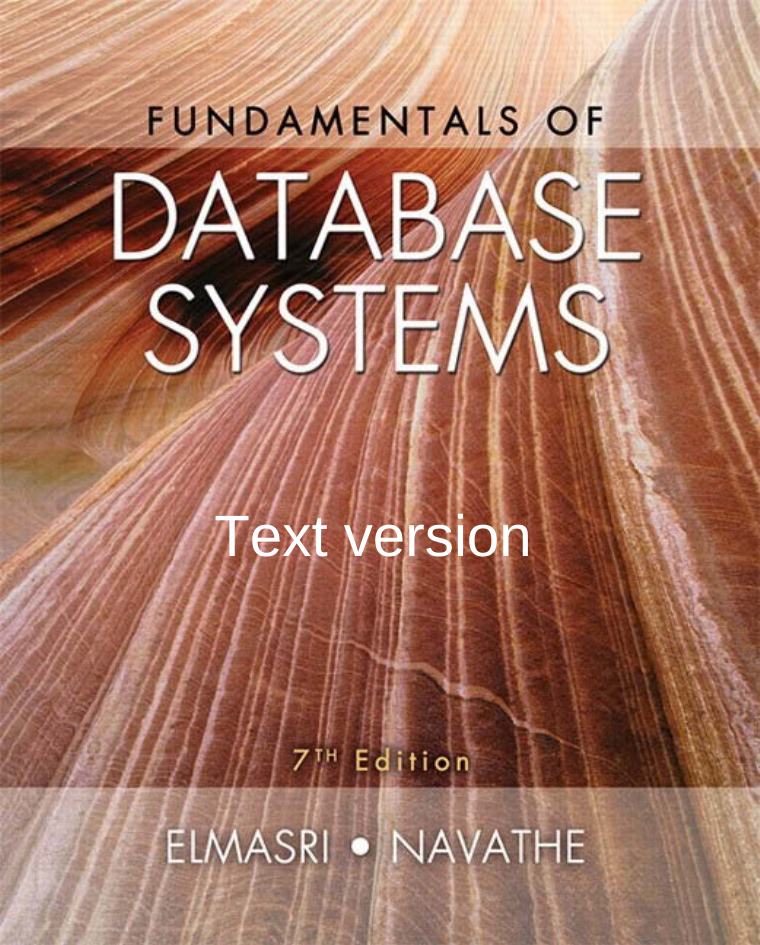
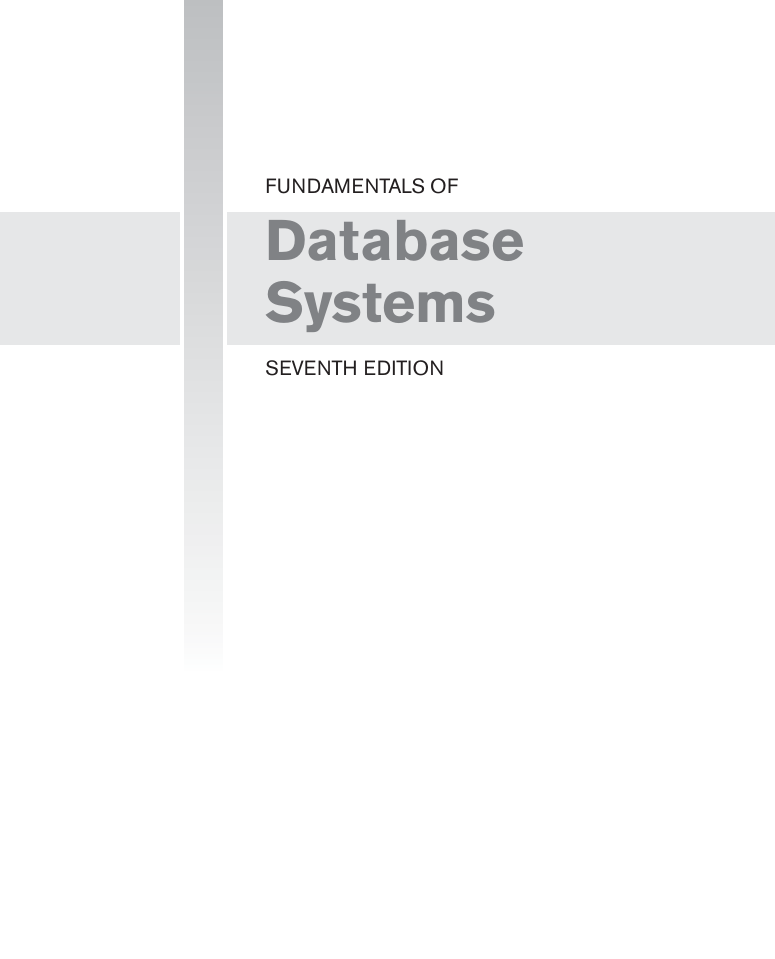

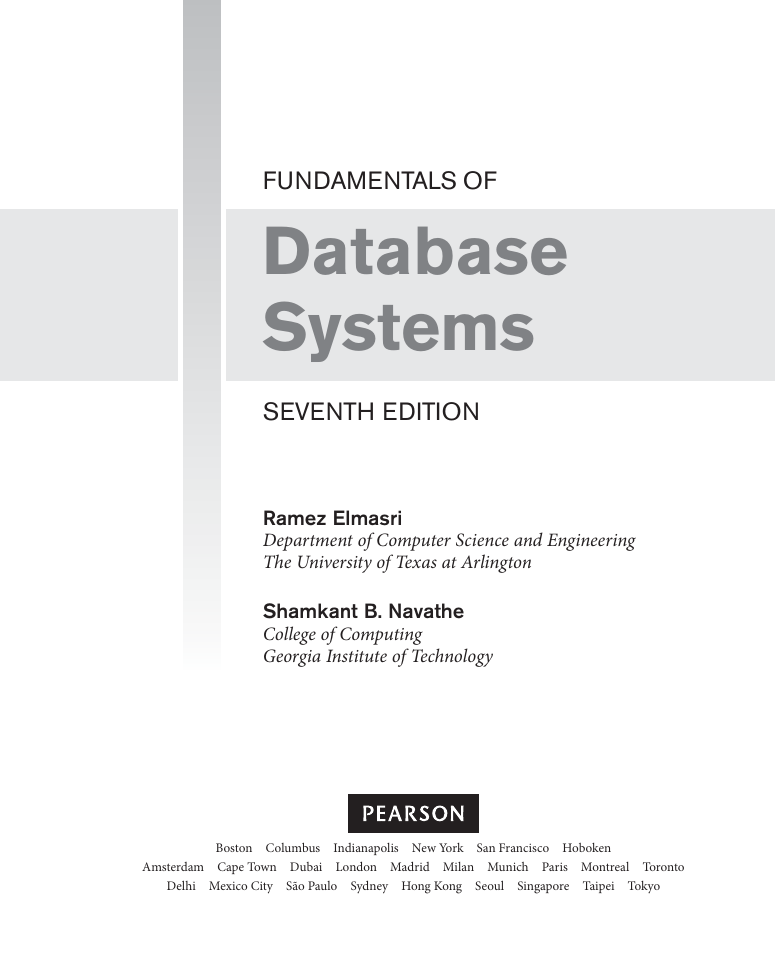
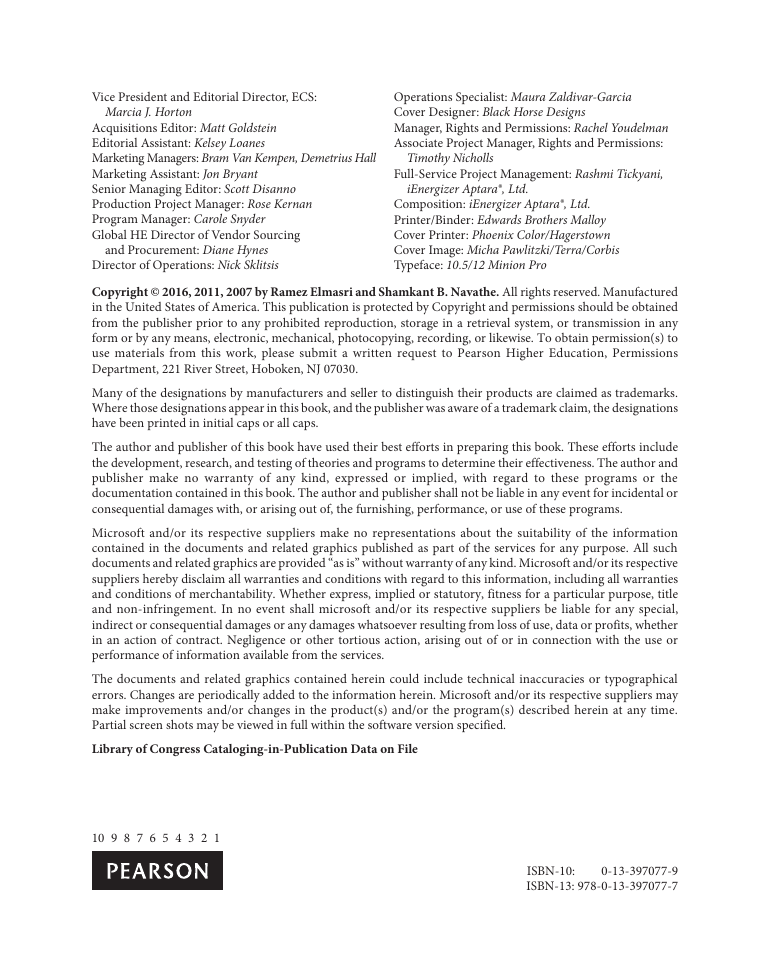


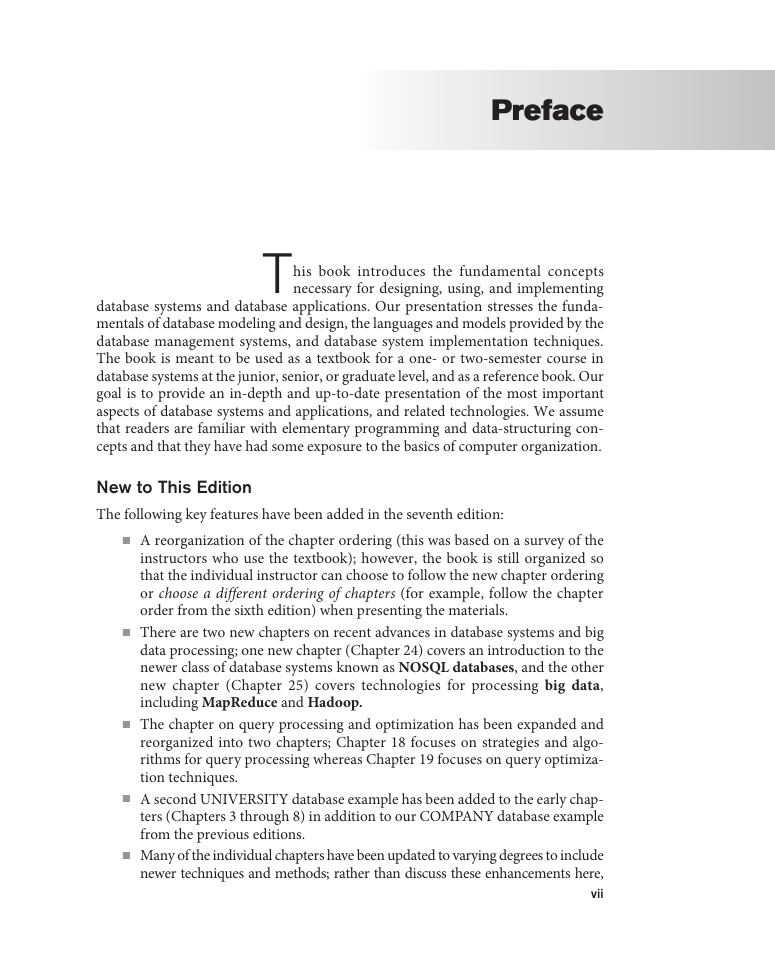








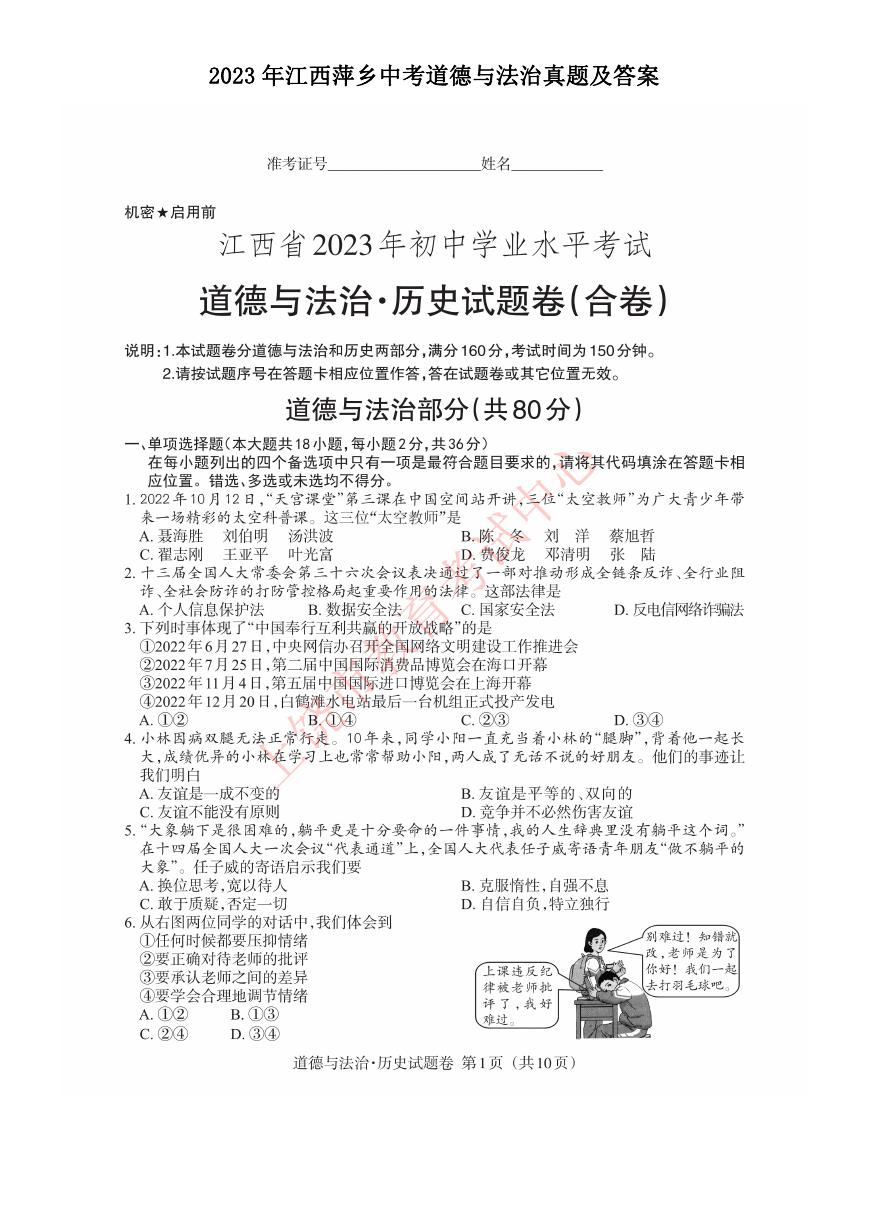 2023年江西萍乡中考道德与法治真题及答案.doc
2023年江西萍乡中考道德与法治真题及答案.doc 2012年重庆南川中考生物真题及答案.doc
2012年重庆南川中考生物真题及答案.doc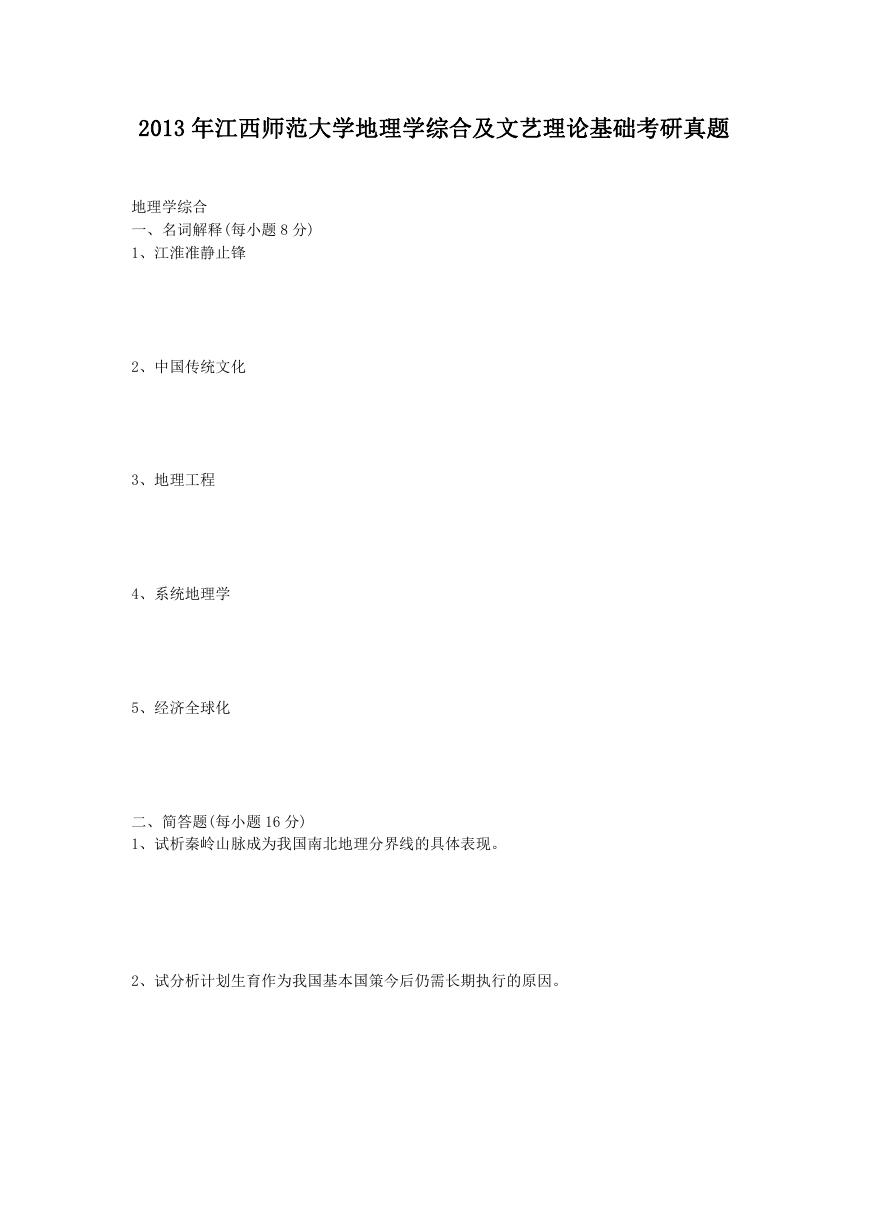 2013年江西师范大学地理学综合及文艺理论基础考研真题.doc
2013年江西师范大学地理学综合及文艺理论基础考研真题.doc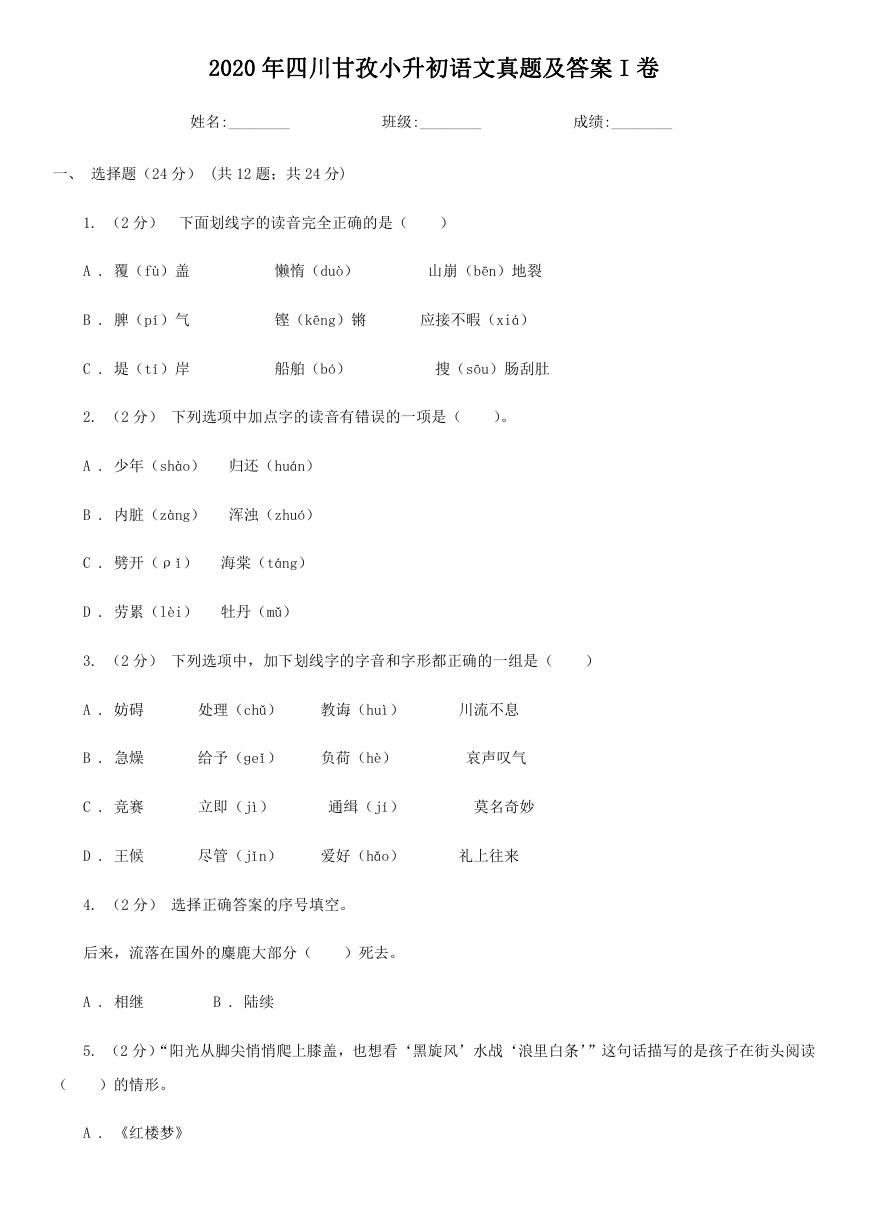 2020年四川甘孜小升初语文真题及答案I卷.doc
2020年四川甘孜小升初语文真题及答案I卷.doc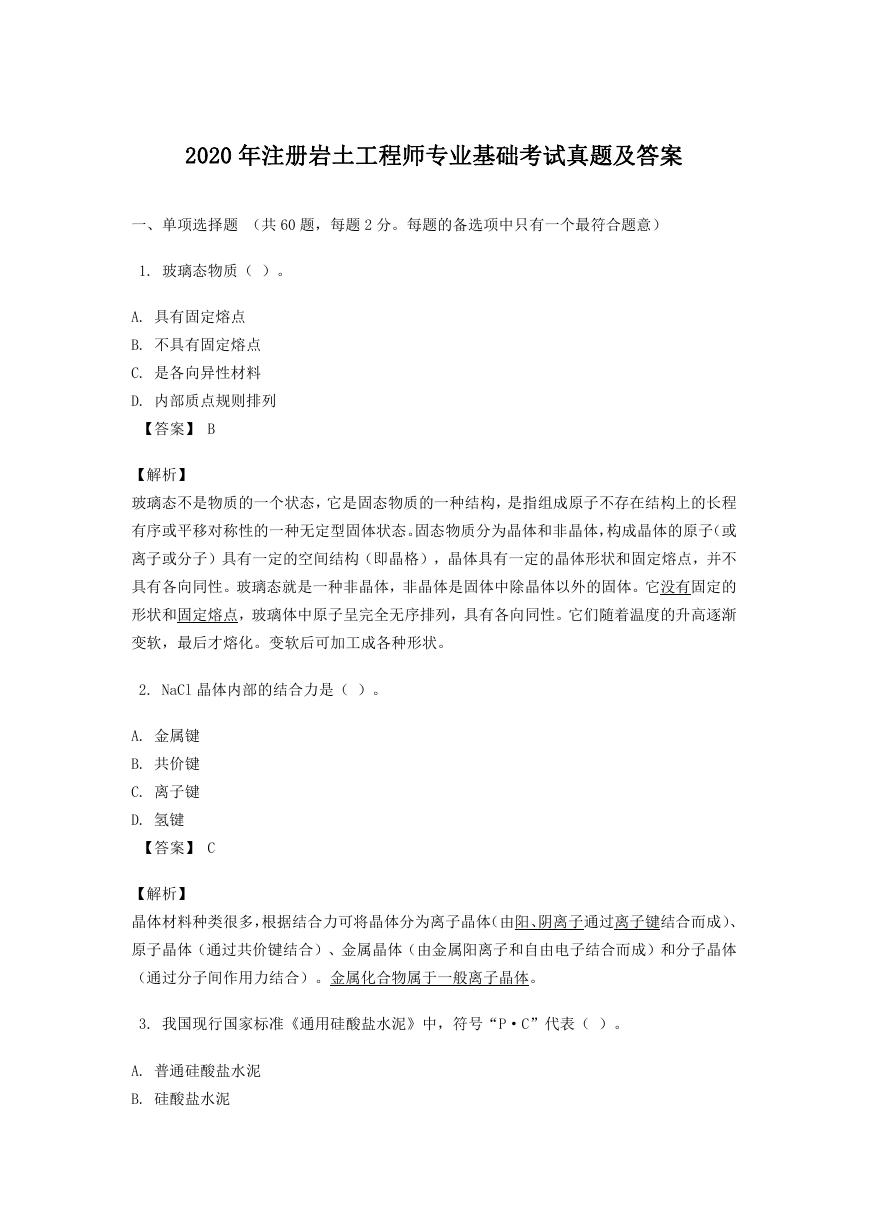 2020年注册岩土工程师专业基础考试真题及答案.doc
2020年注册岩土工程师专业基础考试真题及答案.doc 2023-2024学年福建省厦门市九年级上学期数学月考试题及答案.doc
2023-2024学年福建省厦门市九年级上学期数学月考试题及答案.doc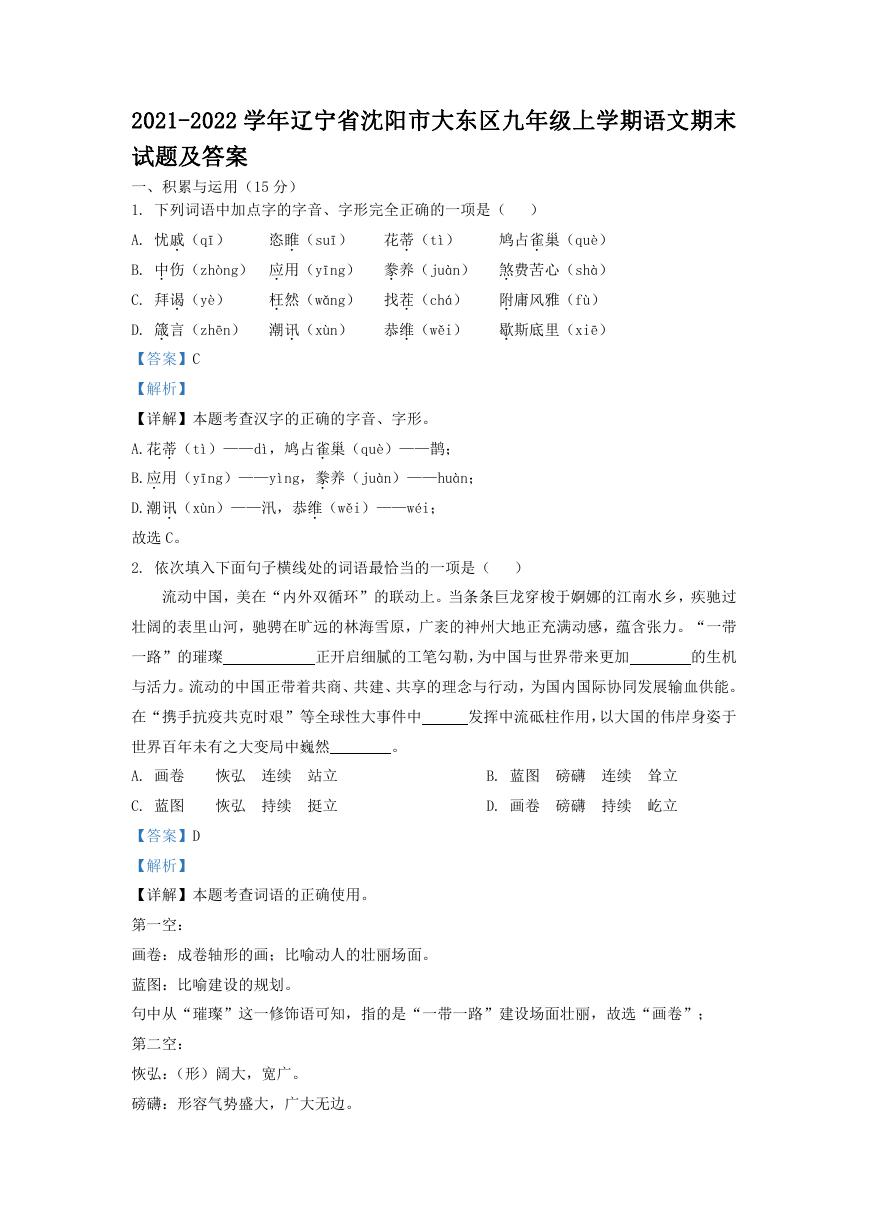 2021-2022学年辽宁省沈阳市大东区九年级上学期语文期末试题及答案.doc
2021-2022学年辽宁省沈阳市大东区九年级上学期语文期末试题及答案.doc 2022-2023学年北京东城区初三第一学期物理期末试卷及答案.doc
2022-2023学年北京东城区初三第一学期物理期末试卷及答案.doc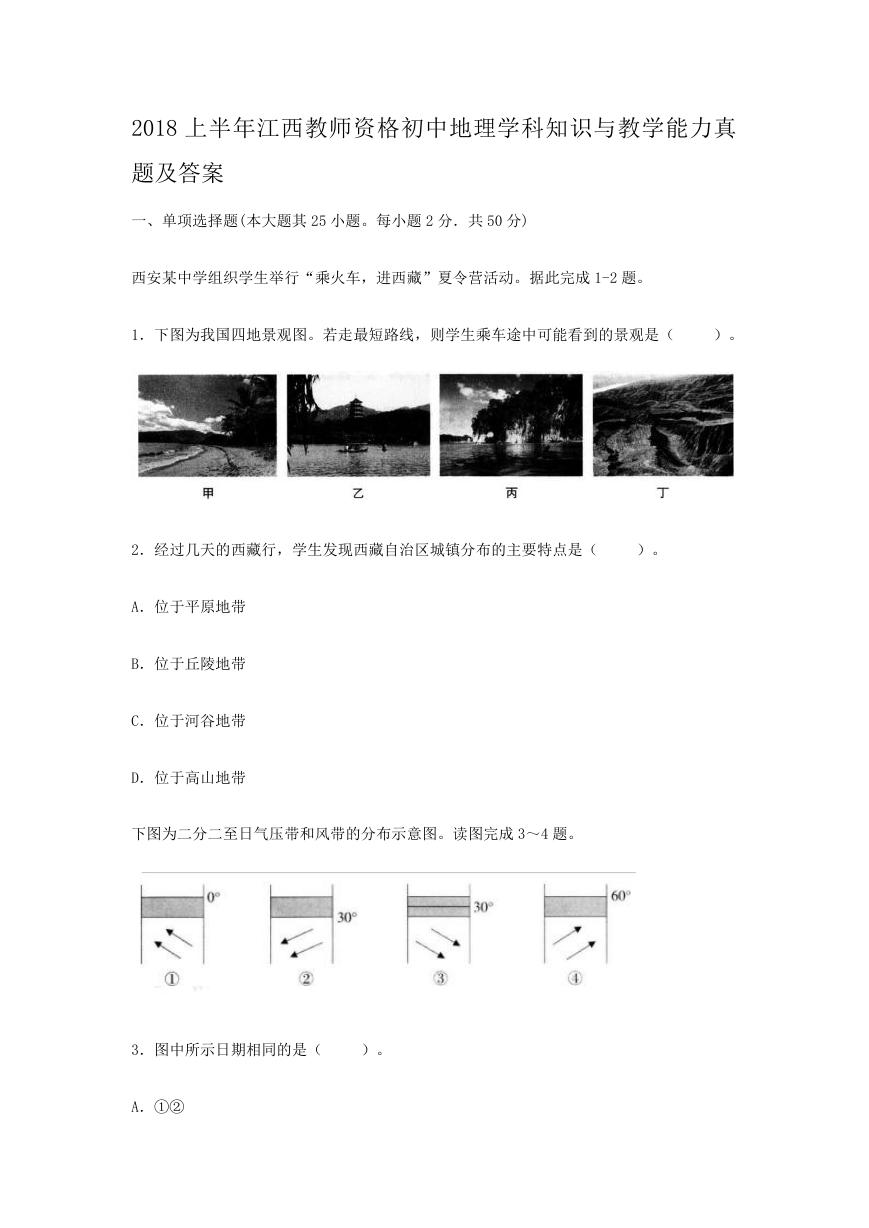 2018上半年江西教师资格初中地理学科知识与教学能力真题及答案.doc
2018上半年江西教师资格初中地理学科知识与教学能力真题及答案.doc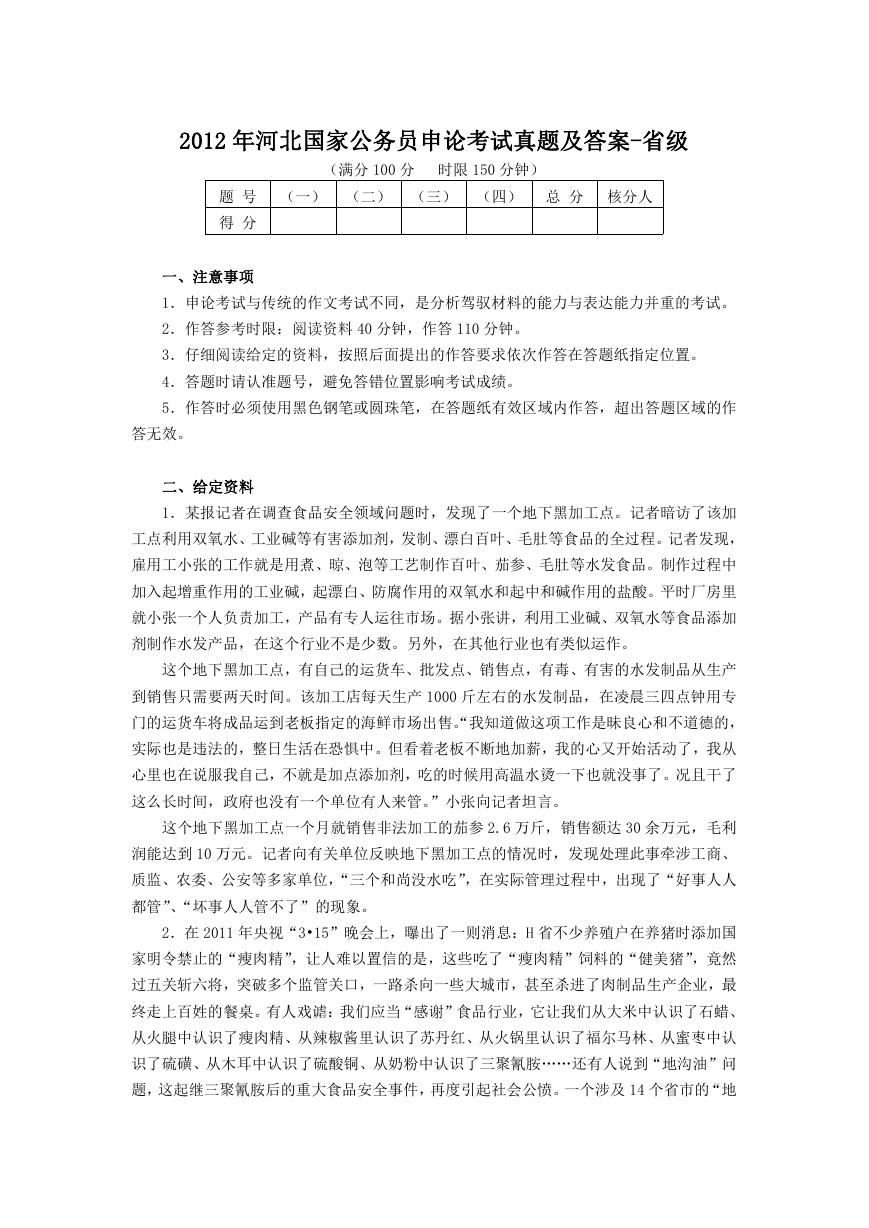 2012年河北国家公务员申论考试真题及答案-省级.doc
2012年河北国家公务员申论考试真题及答案-省级.doc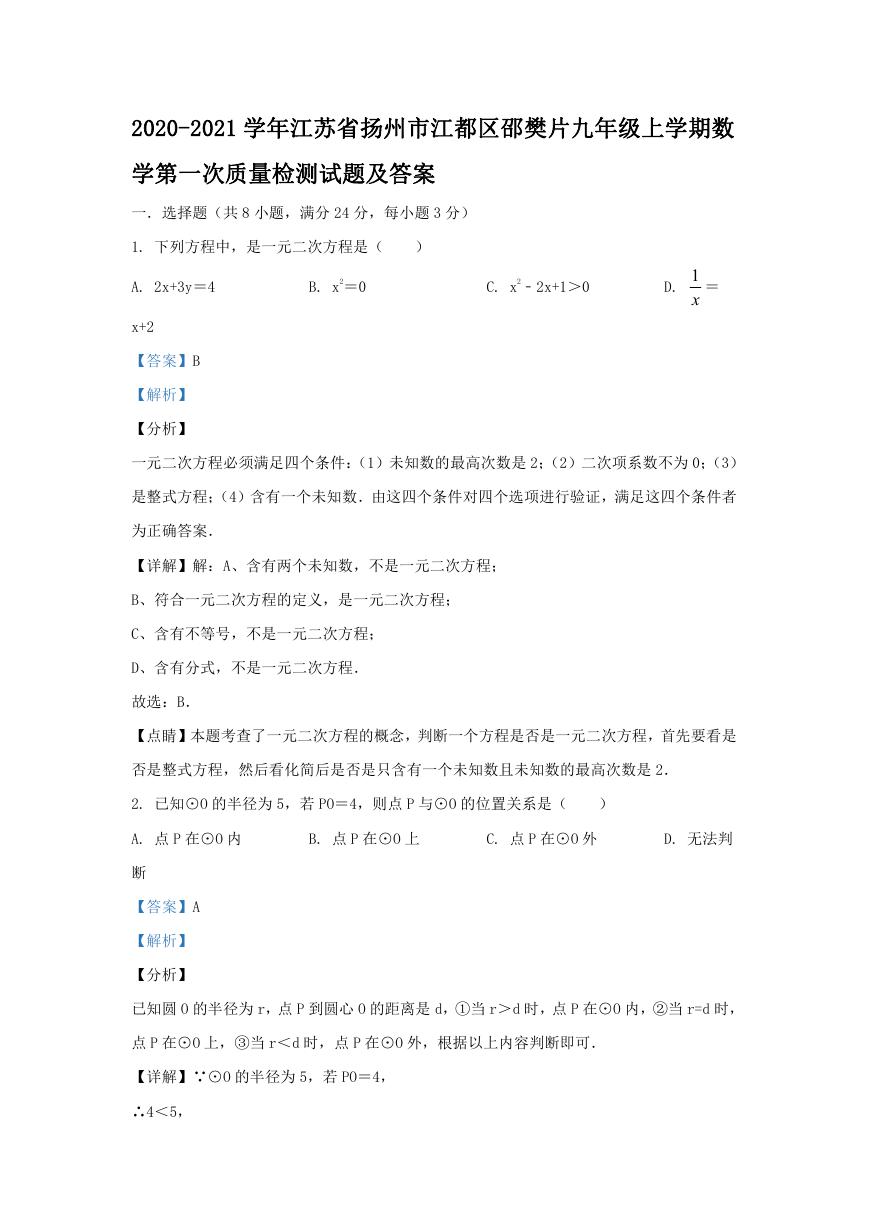 2020-2021学年江苏省扬州市江都区邵樊片九年级上学期数学第一次质量检测试题及答案.doc
2020-2021学年江苏省扬州市江都区邵樊片九年级上学期数学第一次质量检测试题及答案.doc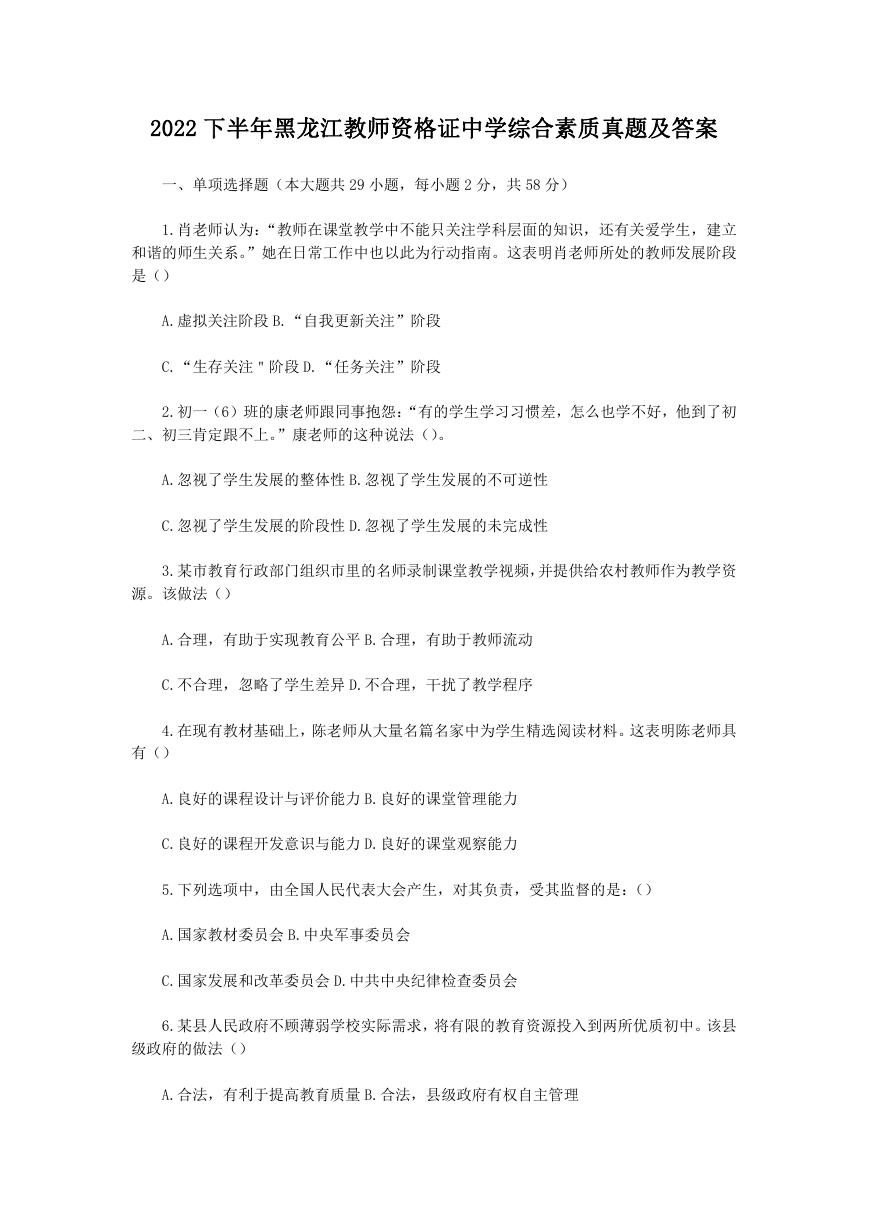 2022下半年黑龙江教师资格证中学综合素质真题及答案.doc
2022下半年黑龙江教师资格证中学综合素质真题及答案.doc